 W
WA bier is a stand on which a corpse, coffin, or casket containing a corpse is placed to lie in state or to be carried to the grave.
 W
WBurial at sea is the disposal of human remains in the ocean, normally from a ship or boat. It is regularly performed by navies, and is done by private citizens in many countries.
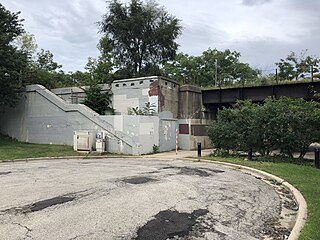 W
WCalvary was a commuter railroad station on the Chicago and North Western Railway's Milwaukee Division, today’s Union Pacific / North Line. The station was located at Mulford Street and Chicago Avenue, in Evanston, Illinois.
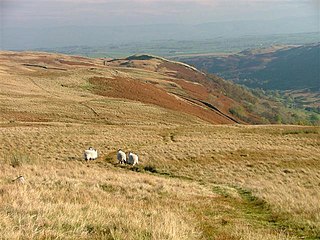 W
WCorpse roads provided a practical means for transporting corpses, often from remote communities, to cemeteries that had burial rights, such as parish churches and chapels of ease. In Britain, such routes can also be known by a number of other names, e.g.: bier road, burial road, coffin line, coffin road, corpse way, funeral road, lych way, lyke way, or procession way. etc. Such "church-ways" have developed a great deal of associated folklore regarding ghosts, spirits, wraiths, etc.
 W
WThe First Call vehicle is a vehicle used in the funeral service industry. This type of vehicle is used to pick up the remains of a recently deceased person, and transport that person to the funeral home for preparation. This initial pickup is called the "first call", hence the name of these vehicles. While some funeral homes will use their hearse for these initial pickups, having vehicles specifically for first calls and using the hearse solely for funerals reduces wear on hearses and makes the first call process more discreet. Sometimes, when the procession portion of funeral protocol comes into play, First Call vehicles double as funeral yield vehicles, which grants the procession the right of way.
 W
WA flower car is a type of vehicle used in the funeral industry of the United States. It is used to carry flowers for the burial service, or sometimes to carry the coffin under a bed of flowers. Built on the same commercial chassis as a hearse, the flower car has half-height rear bodywork on the rear similar to a pickup truck bed. The bed contains a liner to hold the flowers, normally built of stainless steel to resist rust. Some flower cars have a raised, flat tonneau cover across the bed at the top, upon which the flowers sit; the center portion sometimes is designed to raise and lower, hydraulically or by hand. If the flower car is designed to carry a casket, it will be stored under the tonneau cover in the space beneath, behind the opening rear gate.
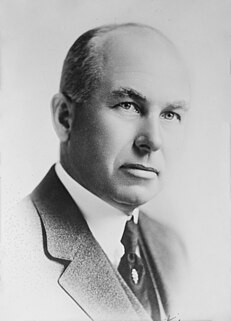 W
WFrederick "Fred" Dozier Gardner, an American businessman and politician from St. Louis, Missouri, served as the 34th Governor of Missouri from 1917 to 1921.
 W
WA hearse is a large vehicle, especially an automobile, used to carry the dead body of a person in a coffin/casket at a funeral, wake, or memorial service. They range from deliberately anonymous vehicles to very formal heavily decorated vehicles.
 W
WAbraham Lincoln's hearse was the purpose-constructed hearse built to carry the body of Abraham Lincoln during a cortège held in New York City on April 25, 1865, shortly after his assassination by John Wilkes Booth. It has been described as the most elaborate of the many hearses used to transport Lincoln's body during the two-week funeral tour which preceded his burial in Springfield, Illinois.
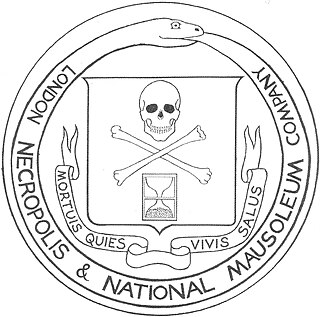 W
WThe London Necropolis Railway was a railway line opened in November 1854 by the London Necropolis Company (LNC), to carry corpses and mourners between London and the LNC's newly opened Brookwood Cemetery 23 miles (37 km) southwest of London in Brookwood, Surrey. At the time the largest cemetery in the world, Brookwood Cemetery was designed to be large enough to accommodate all the deaths in London for centuries to come, and the LNC hoped to gain a monopoly on London's burial industry. The cemetery had intentionally been built far enough from London so as never to be affected by urban growth and was dependent on the recently invented railway to connect it to the city.
 W
WLondon Necropolis railway station was the Waterloo, London terminus of the London Necropolis Railway. The London Necropolis Railway was opened in 1854 as a reaction to severe overcrowding in London's existing graveyards and cemeteries. It aimed to use the recently developed technology of the railway to move as many burials as possible to the newly built Brookwood Cemetery in Brookwood, Surrey. This location was within easy travelling distance of London, but distant enough for the dead not to pose any risk to public hygiene. There were two locations for the station; the first was in operation from 1854 to 1902, the second from 1902 to 1941.
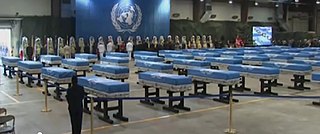 W
WThe recovery of US human remains from the Korean War has continued since the end of the war.
 W
WA riderless horse is a single horse, without a rider, and with boots reversed in the stirrups, which sometimes accompanies a funeral procession. The horse follows the caisson carrying the casket. A riderless horse can also be featured in military parades to symbolize fallen soldiers. In Australia for example, it is traditional for a riderless horse known as the 'Lone Charger' to lead the annual Anzac Day marches.
 W
WRose Hill was a commuter railroad station on the Chicago and North Western Railway's Milwaukee Division, now the Union Pacific / North Line. The station was located at Rosehill Drive and Ravenswood Avenue, in Chicago's Edgewater neighborhood. Rose Hill opened in 1855 or 1856, and was in service for more than 100 years before closing in 1958 as part of a service revision on the North Western's commuter lines.
 W
WA royal funeral chariot is a wheeled vehicle traditionally used to transport the bodies of royalty during funeral processions in some cultures of Mainland Southeast Asia. Today, they remain in use in Thailand and Cambodia.
 W
WSpace burial is the launching of samples of cremated remains into space. Missions may go into orbit around the Earth or to extraterrestrial bodies such as the Moon, or farther into space.
 W
WA funeral train carries a coffin or coffins (caskets) to a place of interment. Funeral trains today are often reserved for leaders, national heroes, or government officials, as part of a state funeral, but in the past were sometimes the chief means of transporting coffins and mourners to graveyards. Many modern era funeral trains are hauled by operationally restored steam locomotives, due to the more romantic image of the steam train against more modern diesel or electric locomotives, however non-steam powered funeral trains have grown in popularity in recent years, with notable examples being the 1968 funeral of Robert F. Kennedy, hauled by two Pennsylvania Railroad GG1 electrics, or the funeral train of George H.W. Bush in 2018, with the Union Pacific Railroad sponsoring the event. Bush's train was led by Union Pacific 4141, an EMD SD70ACe diesel locomotive that had been previously painted in a "George Bush 41" scheme in the style of Air Force One, and dedicated to Bush with him and Barbara touring the locomotive unit at its unveiling ceremony in 2005.
 W
WYase Dōji is the term used for the people of Yase, in Sakyō district, Kyoto, Japan who by tradition bore the sōkaren or portable bier upon which the imperial coffin was placed. In 2010, 741 historical materials relating to the Yase Dōji were designated as Important Cultural Properties.